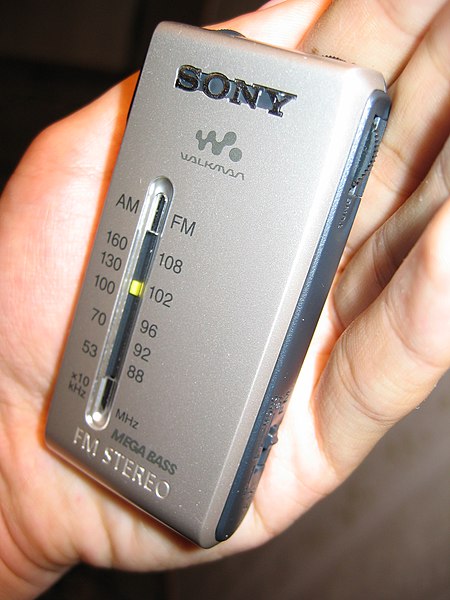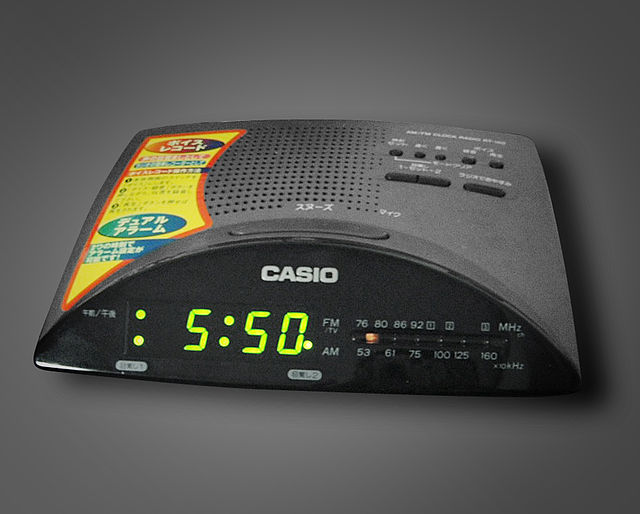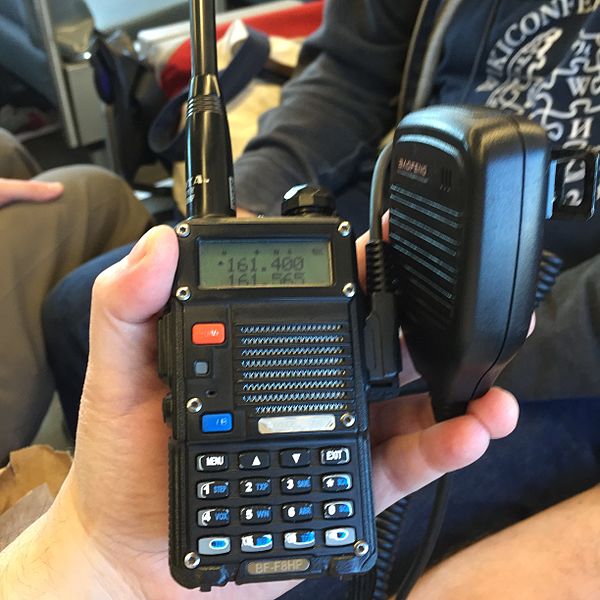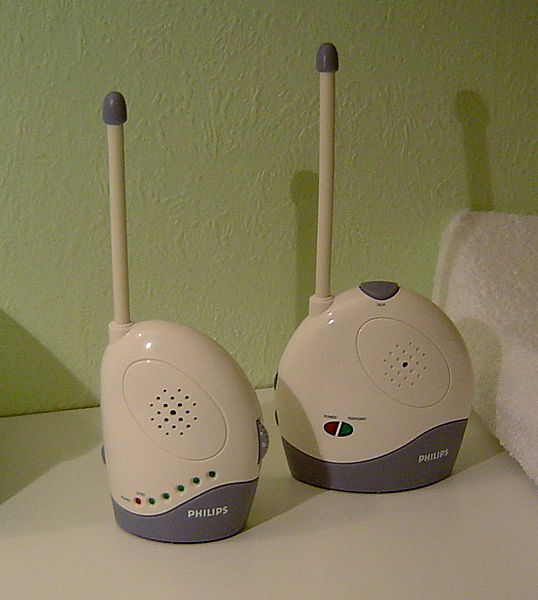Rudolf Goldschmidt (1876–1950) was a German engineer and inventor, best known for the development of the Goldschmidt alternator radio transmitter, and the tone wheel receiver.
Goldschmidt demonstrating a heart monitor (1927)
Goldschmidt tone wheel used at the Tuckerton, New Jersey transatlantic receiving station.
In radio communications, a radio receiver, also known as a receiver, a wireless, or simply a radio, is an electronic device that receives radio waves and converts the information carried by them to a usable form. It is used with an antenna. The antenna intercepts radio waves and converts them to tiny alternating currents which are applied to the receiver, and the receiver extracts the desired information. The receiver uses electronic filters to separate the desired radio frequency signal from all the other signals picked up by the antenna, an electronic amplifier to increase the power of the signal for further processing, and finally recovers the desired information through demodulation.
A portable battery-powered AM/FM broadcast receiver, used to listen to audio broadcast by local radio stations.
A bedside clock radio that combines a radio receiver with an alarm clock
Handheld scanner
Baby monitor. The receiver is on the left






